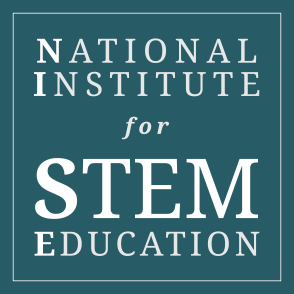If you were to ask teachers, parents, or students this question, you would get a wide variety of responses:
"Science, Technology, Engineering, and Math."
"The use of project-based learning to guide instruction."
"Educators helping students develop workforce skills."
All of these answers are scattered but absolutely correct. If you are defining STEM based on inputs, or tools and instructional strategies considered best practices in STEM classrooms. But, what really is the endgame when it comes to STEM instruction?The endgame would be the results or outputs. The National Institute for STEM Education is on a mission to remove the ambiguity surrounding STEM education by reworking the way we define it. Let's think about it and use weight loss, for example. A half-second Google search yields more than 60 million results for the phrase "weight loss." You can read for hours or even days about the tried and true methods to drop pounds: calories counting, low carb, cardio, strength training, and drinking more water, for example. You can find all the fad diets: cabbage soup diet, apples and eggs diet, potato diet, fruit diet, etc., and you can absorb additional tips and tricks:
"Don't eat after 7 p.m.!"
"Drink water before each meal!"
"Have fiber with each meal!"
"Have protein with every meal!"
"Meal plan every day!"
This information is super useful as inputs to weight loss. None of us decide to lose weight because we have a white hot burning desire to eat nothing but apples and eggs for what seems like an eternity, or in my case five days! We do it for the outputs: a slimmer waistline, smaller clothing sizes, increased confidence, higher stamina, and better overall health. The same goes for STEM: we teach it for the outputs.
Emphasizing STEM outputs
When we ask NISE teacher certification candidates and others what STEM education is supposed to develop, they give us a near-universal response. They are looking for 21st Century Skills, such as critical thinking, creativity, collaboration, and problem-solving. This results-driven focus makes it easier to settle into a definition of STEM that works: STEM is developing 21st Century Skills and workforce readiness through meaningful standards-aligned learning experiences.
Now that is a definition that anyone can get behind and this output-focused definition immediately gives every single STEM lesson a purpose that extends beyond the classroom. We are reaching all the way to the hallmark of good teaching: enduring understanding, a knowledge that lasts forever, and skills that become life skills.
STEM changes how we teach
STEM teachers do not change what they teach, they change how they teach it. Successful STEM teachers deliberately choose instructional strategies that focus on outputs to prepare students for the workforce of today and tomorrow. At NISE, we believe the purposeful integration of our 15 STEM Teacher Actions across all content areas promote STEM outcomes. We help candidates bridge the gap between theory and practice to do the incredible and get results.
